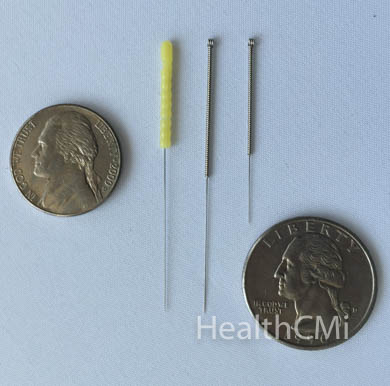Put Down the Chill Pills: Acupuncture De-Stresses You
As Well As Drugs
Acupuncture is usually dismissed in
the alternative medicine category, despite many who extol its benefits for
relieving a variety of conditions. Now a new study shows that the ancient
Chinese practice mimics the same changes in the body that occur from taking
stress-relief drugs.
Researchers at Georgetown University
Medical Center (GUMC) found that acupuncture calms stress in rats using similar
mechanisms to anti-depressant and anti-anxiety drugs. The study, which stressed rats by chilling them
in ice water before returning them to their cages, showed that acupuncture
prevents release of 'stress' hormones. This could be a step towards vindication
of acupuncture as a valid medical treatment.
"The benefits of acupuncture
are well known by those who use it, but such proof is anecdotal," senior
investigator and associate professor Ladan Eshkevari told GUMC News. "This
research demonstrates how acupuncture might work in the human body to reduce
stress and pain, and, potentially, depression."
In one experiment, a single needle
was stuck in the rats' stomach meridian (point ST36, which in humans is just below the
knee). This is one of the most powerful points in acupuncture, associated with
chronic pain, the immune system, mood, and emotion. In the experiment,
Eshkevari and her team found that this reduced activity in the hypothalamus
pituitary adrenal (HPA), which in turn stopped production of stress hormones.
To read more, click here.
 A
hypertrophic scar is a cutaneous condition involving excessive collagen
deposits during wound healing. This affects aesthetic appearances and
may result in various forms of psychological dysfunction in serious
cases. Although different treatment strategies targeted at hypertrophic
scars are practiced, there is yet to be a definitive treatment protocol
for this condition. The results demonstrate that electroacupuncture
regulates and impedes regeneration of fibrous tissues, prevents
adhesions during recuperation, and improves blood circulation at scar
areas. Also, electroacupuncture is effective in softening and lightening
scars, decreases the size of scars, and reduces scar thickness.
A
hypertrophic scar is a cutaneous condition involving excessive collagen
deposits during wound healing. This affects aesthetic appearances and
may result in various forms of psychological dysfunction in serious
cases. Although different treatment strategies targeted at hypertrophic
scars are practiced, there is yet to be a definitive treatment protocol
for this condition. The results demonstrate that electroacupuncture
regulates and impedes regeneration of fibrous tissues, prevents
adhesions during recuperation, and improves blood circulation at scar
areas. Also, electroacupuncture is effective in softening and lightening
scars, decreases the size of scars, and reduces scar thickness.